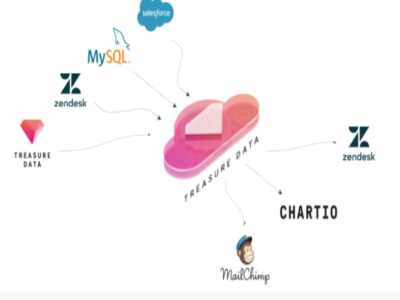What to Consider Before Implementing Predictive Modelling
April 18, 2018The database marketing arena has been hit with a lot of buzzwords in the past few years. Even when faced with new entrants to the arena like artificial intelligence and machine learning, predictive analytics has held its own ground.
A lot of marketers and businesses are realising that predictive analytics is a great building block to feed into automated marketing campaigns and decisioning systems. However, implementation is still proving to be a challenge. Issues with the quality of data held has led to questions about the best practices for predictive analytics implementation.
In this blog I am going to take you through the five key areas to consider before implementing a marketing campaign powered by predictive analytics.
Do I have the right predictive model?
As with any marketing campaign, predictive models should be used to help support the business case, rather than a business case being built around a model. As an example, we had a client who wanted to target the lowest value prospects in their customer database. Rather than using just the prospect conversion model, we combined this with the lifetime value (LTV) tracker. The RedEye LTV tracker predicts scores for prospects by looking at the value of customers with a similar profile. Given the range of values for prospects, it was easy to isolate those prospects with a lower than average LTV. This was then combined with the prospect model to identify the prospects who had the highest likelihood to convert. This allowed the targeting to be far more precise and the marketing campaign almost doubled the values of the target cohort.
Should I test?
Let us consider a model which tells you which of your prospects are likely to make a purchase in the next 30 days. The only thing the model is providing you is the likelihood that an individual is going to make a purchase. It does not tell you whether they need an additional marketing message, whether they need an incentive or whether they will be influenced by your social messaging over the period. There are two ways to answer those questions – use an additional model to predict the likely response to events further down the chain or the simpler one, test.
How big should my segment be?
The number of recipients in a campaign is always a sticking point, especially when you factor in control cells for testing. However, as with every new campaign plan, testing helps to optimise campaigns and identify the best performers. The potential loss in revenue from an untested change or incorrect predictive implementation is much larger than what is lost from not sending the campaign to the control set.
When splitting your campaign pot for testing, if you have a small volumes (anything less than 50,000 recipients), split your pot 50% test and 50% control. This will give you the best shot at achieving a significant different. For larger segments, you can have fewer in the control. If in doubt I recommend using a significance calculator to check if your splits are likely to give you a significant result.
How do my models need to change over time?
Any predictive model being used in production needs to change. If a prospect has made a purchase, they are now a customer and progressing round the customer lifecycle. Now they should receive scores for how likely they are to make a second purchase and be excluded from the prospect model.
A new campaign or message could change the way in which individuals interact with your brand. People also behave very differently during peak periods. If this daily and seasonal change in behaviour isn’t being considered and scores are static for many days, then it is no longer a true predictor of future behaviour.
When should I not use my predictive models?
All predictive marketing is geared to telling you to use predictive models to improve performance of you marketing campaigns. However, there are some instances where you may choose to not use the models. Let us consider Black Friday, lots of retailers have a separate microsite encouraging people to sign up to receive event specific offers. Unsubscribe rates post peak period, especially with a targeted opt in, can be almost double what they are for regular campaigns. Using a model looking at the likelihood that individuals will unsubscribe will tell you that a lot of people who have opted in over peak are likely to unsubscribe. This would then exclude these individuals from receiving the very campaigns they have signed up for.
Explore the RedEye Predictive Modeller, which directly feeds into the customer lifecycle, helping you move your prospects and customers further down the funnel.


